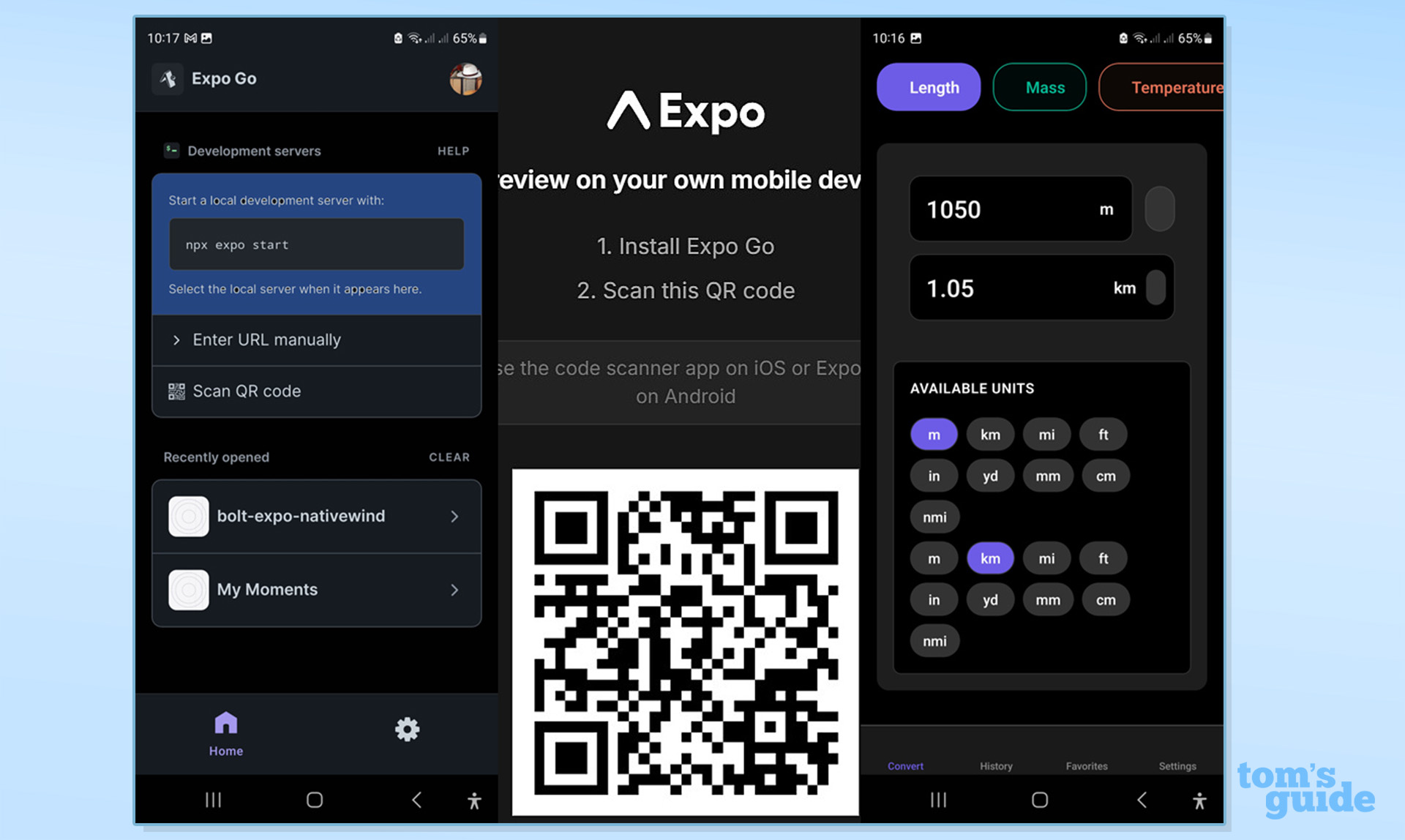I just tried this game-changing AI tool that lets you build iPhone apps with a text prompt — no coding required
A bold new direction for the no-code AI app heroes

In a sudden but inevitable move, the team behind Bolt.new has released a new feature to allow anyone to create an iOS or Android mobile app using nothing more than a simple text prompt.
Those brave souls who've done mobile app development will know how challenging it can be to deliver the right kind of experience on a smartphone. Which makes this new feature a potential game-changer in every way.
The new functionality is based around a partnership between Bolt, a market leading no-code AI app generator, and a company called Expo, an open source mobile app development platform. The idea is for Bolt to create the initial app code, and then rely on Expo to shape the output into a native mobile format.
This means delivering the right kind of menu structure, screen access and all the other bits that make a smartphone app custom-fit for the mobile world.
As a long term Bolt user, I just had to jump in and have a play around of the new function as soon as I could. On the surface very little has changed, so obviously a lot of the hard work is going on in the background. To start a native app project you first have to press the new "build a mobile app with Expo" button.
Straightforward process

From then on the process is the same as if you’re developing a normal application with Bolt. Enter the text prompt you want (e.g. ‘build me a to-do list app’), press the enhance prompt button to get a more sophisticated AI generated request, and hit the go button.
Bolt then does its usual job of creating the files that make up the finished app.
In practice this part works very well, as it does with generic Bolt apps. The main difference is that instead of seeing the app appear in the preview window, a QR code appears. Having downloaded the Expo app onto your phone, you then point your phone camera towards the QR code and the app appears magically on your phone in native format. It’s quite impressive.
Early days
It’s very early days for this collaboration between the two companies, and it shows. My test was to create a very simple unit converter app, which I’ve done several times before as a web app with Bolt. This time the Android app I created ended up fairly good after some fiddling around with clunky design issues. The experience certainly wasn’t as straightforward as creating a normal app, but I’m guessing there’s a fair amount of teething issues that need bedding in.
One major disappointment was the fact that the deploy button doesn’t automatically distribute the finished app to the Google Play or Apple App stores.
One major disappointment was the fact that the deploy button doesn’t automatically distribute the finished app to the Google Play or Apple App stores. Instead it leads to a web page with instructions on how to do a manual deployment to these online services.
The problem with this is it involves quite a bit of technical know-how — including use of the command line and configuring settings — most of which will be way beyond ordinary mortals.
In contrast, when you deploy a standard Bolt app, it is uploaded and available to the world on Netlify in about 30 seconds, with zero human intervention needed.
Outlook

This new Bolt feature is a credible start. It’s still very rough around the edges, and the native implementation you get is far from polished out of the box. For example the menu system is a rather primitive affair, at least to start with.
There were also quite a few glitches which popped up during my test, and all in all it felt like a bit of a struggle to get what I wanted. I have a feeling there's also a few issues with the syncing between the preview app on the phone, and the development system.
But every journey has to start somewhere, and this is definitely exciting in terms of the potential for opening up the mobile app market to a whole new generation of ideas and developers.
More from Tom's Guide
- Gemini Live major upgrade just revealed by Google
- ChatGPT's scheduled task feature is a game changer — 5 prompts to try first
- The 'Netflix of AI' has a waitlist of 50K people — I got in and here's the good and the bad
Sign up to get the BEST of Tom's Guide direct to your inbox.
Get instant access to breaking news, the hottest reviews, great deals and helpful tips.

Nigel Powell is an author, columnist, and consultant with over 30 years of experience in the technology industry. He produced the weekly Don't Panic technology column in the Sunday Times newspaper for 16 years and is the author of the Sunday Times book of Computer Answers, published by Harper Collins. He has been a technology pundit on Sky Television's Global Village program and a regular contributor to BBC Radio Five's Men's Hour.
He has an Honours degree in law (LLB) and a Master's Degree in Business Administration (MBA), and his work has made him an expert in all things software, AI, security, privacy, mobile, and other tech innovations. Nigel currently lives in West London and enjoys spending time meditating and listening to music.
You must confirm your public display name before commenting
Please logout and then login again, you will then be prompted to enter your display name.










